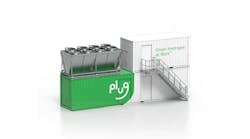RTDS, based in Winnipeg, Canada, has been in the energy market since the early 1990s. The company provides real-time digital simulation equipment, which allows users to perform closed-loop testing of power system protection and control equipment.
“This is a very unique type of equipment testing,” said Sidwall.
It allows customers to simulate their microgrid in a safe, controlled environment, connect their equipment to the microgrid and actually test it before they deploy the system out in the real world, she explained.
This is technology that’s being used at research universities and labs across the country, Sidwall pointed out, including the National Renewable Energy Laboratory, which is currently using it to test new equipment for the renewable energy space.
“It’s a great tool for microgrid testing because if you want to avoid interaction of different control and protection equipment and prove technology before you’re actually putting it in the field, it allows it to be tested in that very controllable laboratory environment,” Sidwall said.
Hardware-in-the-loop, or closed-loop testing, is relatively new in the microgrid field, so educating users and potential users about the technology as well as the benefits and advantages it can provide is very important.
Certain behaviors in the power system are better captured with real-time simulation, Sidwall shared. For example, renewable energy resources are interfaced into the grid via power electronic converters, rather than traditional generation.
“The converters and their controls can behave somewhat unpredictably, whether that means they’re interacting with other control systems or perhaps there are transients occurring on the grid because of them. And being able to predict that behavior is very important in the microgrid space,” she said.
Originally, RTDS’ business model was more geared toward conventional power system testing applications, but the company is seeing the need growing in the microgrid space.
“Microgrids are exciting because they involve a lot of new technologies and new control strategies, so it’s exciting to be able to see people innovating in that space with new products, and then being able to test those new products before they come out is a good opportunity,” Sidwall said.
Join us for the next Microgrid Knowledge conference: Microgrid 2021: The World Awakens to Microgrids, May 11-June 3. Participation is free for those who register in advance. Register today.








